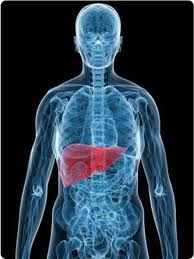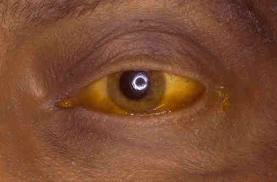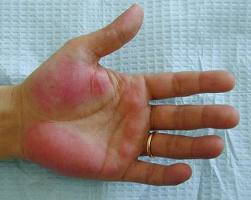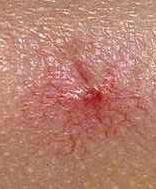 Last week ended with an exciting city-wide hepatitis B screening event in downtown Philadelphia. This event was sponsored by the Hepatitis B Foundation and Hep B Free Philly as part of the Hep B Free Philadelphia campaign. Hospitals included Hahnemann University Hospital, Thomas Jefferson University, Children’s Hospital of Philadelphia (CHOP), and Albert Einstein Medical Center. Naturally each site was a little different and had their unique challenges. Throughout the four sights there were Hepatitis B Foundation and Hep B Free Philly volunteers, and 100 college-student volunteers. Student volunteers were a mix of pre-med and medical students, public health students, tutors in Chinese, Vietnamese, Korean, Spanish and French, and students interested in doing community out-reach. Twenty community –based organizations were also involved in order to reach out to high risk communities throughout the city of Philadelphia. During this event, 200 at-risk participants were screened for hepatitis B. Those participants that do not have HBV will be invited to receive their free HBV vaccine. This info will arrive in the mail with their test results. Those with HBV will be provided with a linkage to care.
Last week ended with an exciting city-wide hepatitis B screening event in downtown Philadelphia. This event was sponsored by the Hepatitis B Foundation and Hep B Free Philly as part of the Hep B Free Philadelphia campaign. Hospitals included Hahnemann University Hospital, Thomas Jefferson University, Children’s Hospital of Philadelphia (CHOP), and Albert Einstein Medical Center. Naturally each site was a little different and had their unique challenges. Throughout the four sights there were Hepatitis B Foundation and Hep B Free Philly volunteers, and 100 college-student volunteers. Student volunteers were a mix of pre-med and medical students, public health students, tutors in Chinese, Vietnamese, Korean, Spanish and French, and students interested in doing community out-reach. Twenty community –based organizations were also involved in order to reach out to high risk communities throughout the city of Philadelphia. During this event, 200 at-risk participants were screened for hepatitis B. Those participants that do not have HBV will be invited to receive their free HBV vaccine. This info will arrive in the mail with their test results. Those with HBV will be provided with a linkage to care.
I thoroughly enjoyed my participation at the CHOP location. Although I was not involved in the planning and set-up process, it was clear that the logistics involved in making this multi-screening event come to fruition was extensive. Testing sites needed to be secured. Community out-reach needed to be done long in advance in order to reach out to high risk communities. Supplies were purchased and carted (via a red-wagon at the CHOP site!) to the various sites. Phlebotomists were hired for the day. Student volunteers were organized. At CHOP, our French translators were essential in making the screening event work. It was great to see the students take an active part in the event. Some went off campus and distributed flyers. Others manned the give-away desk. A number of volunteers helped patients with paper work and translations, while a number of students directed and maintained the flow of traffic from one station to the next. All volunteers worked to make the operation run smoothly.
During the CHOP screening event, participants received their paper-work and went into the auditorium and answered screening questions, signed consent forms, and filled out their self-addressed envelope for their test-results. Paper work was reviewed by volunteers for signatures and accuracy, and appropriate labels were placed on paper work and tubes by Chari and Jessie – a very tedious process. One small tube of blood was drawn by highly qualified phlebotomists. Since we were at CHOP, our expertise included pediatric phlebotomists and smaller, pediatric tubes, and tiny needles for kids. From experience I can tell you this is a real bonus! We did not have many small children screened at our site, but we were happy to accommodate those little ones that were screened. Each child also got a sticker, a band-aid and a coloring book and crayons following their screening or the screening of their parents. Water and crackers were available for all that were screened, and each family got a “B A Hero” tote bag.
Following the blood draw, participants were invited back into the auditorium to learn more about hepatitis B, whether it was to address specific questions or in small or larger group presentations. This is where I spent most of my time. The majority of participants screened at CHOP were African immigrants. Most were French speaking, so the need for a French translator was essential to our outreach mission.
In the past I have enjoyed providing HBV training in China, but this is my first time working with the African Immigrant population. It’s always a pleasure to work with different ethnic communities. In Philadelphia, the prevalence numbers of those with HBV are between 8% and 13% in the African Immigrant community, so getting the HBV basics across is very important in this community. One man was quite empowered by what he learned and asked if he could take some of our HBV information sheets home so he could distribute them to friends and neighbors. We also had a religious leader come for screening at the very end of the event. Hopefully he will bring his message back to his faith community, and it will encourage others to be screened at another time. It doesn’t get any better than that!
Personally, I found the screening event a very rewarding experience. Hep B Free Philadelphia is committed to continutedl outreach and screening in the Philadelphia area for those that missed last week’s event and would like to be screened. Please check it out if you are local and interested in volunteering. If you’re not local, you might find a Hep B Free organization in your own city. Get involved! B A Hero! Save lives! Stop Hepatitis B!
Visit: www.bfreephilly.org
Check out: Reflections from the 10/22 Screening Event at Thomas Jefferson University










